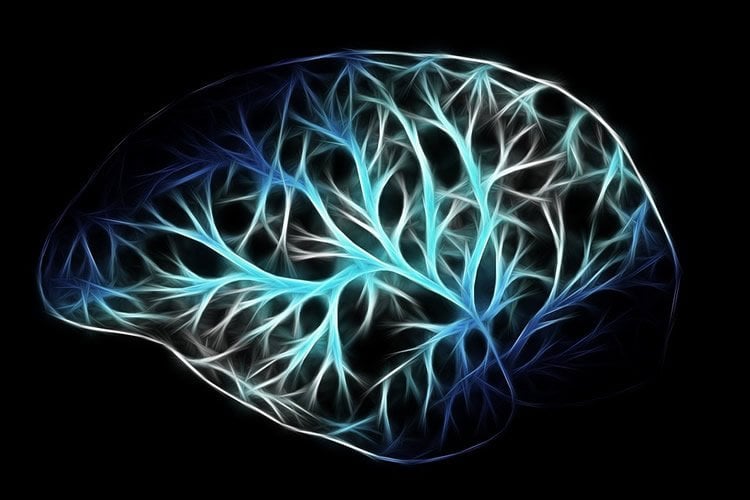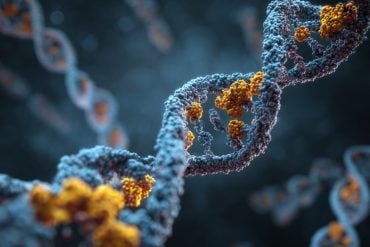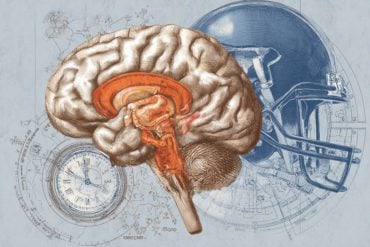Summary: A new study reveals the role synaptic feedback systems play in shaping learning processes. The findings could help develop more efficient artificial intelligence techniques.
Source: University of Geneva.
Human beings, like other animals, possess an enormous learning capacity that allows for the apprehension of new sensory information to master new skills or to adapt to an ever-changing environment. However, many of the mechanisms that enable us to learn remain poorly understood. One of the greatest challenges of systems neuroscience is to explain how synaptic connections change to support adaptive behaviours. Neuroscientists at the University of Geneva (UNIGE), Switzerland, previously showed that synaptic learning mechanisms in the brain’s cortex are dependent on feedback from deeper brain regions. They have now precisely deciphered how this feedback gates synaptic strengthening by switching on and off particular inhibitory neurons. This study, which can be read in Neuron, not only constitutes an important milestone in our understanding of the mechanisms for perceptual learning but may also offer insight into computerized learning systems and artificial intelligence.
The cortex – the brain’s outer and largest region – is important for higher cognitive functions, complex behaviours, perception, and learning. Upon the arrival of a sensory stimulus, the cortex processes and filters its information before it passes the most relevant aspects on to other brain regions. Some of these brain regions, in turn, send information back to the cortex. These loops, known as “feedback systems”, are thought to be essential for the functioning of cortical networks and their adaptation to new sensory information. “For perceptual learning – which is the improved ability to respond to a sensory stimulus – neuronal circuits need to first assess the importance of the incoming sensory information and then refine the way it is processed in the future. Feedback systems to a degree confirm that those synapses that were responsible for transmitting the information to other brain areas did this correctly”, explains Anthony Holtmaat, professor in basic neurosciences at the UNIGE Faculty of Medicine, who directed this study.
How the whiskers highlight the feedback systems
The whiskers on a mouse’s snout are specialized in tactile sensing and play a major role in the animal’s ability to comprehend aspects of its direct environment. The part of the cortex that processes sensory information from the whiskers continuously optimizes its synapses in order to learn new aspects about the tactile environment. Therefore, it constitutes an interesting model for understanding the role of feedback systems in synaptic learning mechanisms.
The UNIGE scientists isolated a whiskers-related feedback circuit, and used electrodes to measure the electrical activity of neurons in the cortex. They then mimicked the sensory input by stimulating a specific part of the cortex known for processing this information, and, at the same time, used light to control the feedback circuit. “This ex vivo model allowed us to control the feedback independently from the sensory input, which is impossible to do in vivo. However, disconnecting the sensory input from the feedback was essential to understanding how the interplay between the two leads to synaptic strengthening” adds Holtmaat.
Inhibiting neurons gate the information
The team found that both components, when triggered separately, activate a wide range of neurons. However, when activated simultaneously, some neurons actually decrease their activity. “Interestingly, the neurons that are inhibited when the sensory input and the feedback occur together usually inhibit neurons that are important for perception, this is known as an inhibition of inhibition or a disinhibition”, explains Leena Williams from the UNIGE Faculty of Medicine, the study’s first author. “Thus, these neurons act like a gate for the incoming information, and which is normally closed. But when feedback comes in, the gate is opened, allowing those synapses that take care of the primary sensory information to increase their strength. With this study we have identified how feedback possibly optimizes synaptic connections to better prepare for future incoming information”, she adds.

Now that they have precisely identified which neurons are involved in this mechanism, these scientists will test their results in “real life” to check whether the inhibiting neurons will behave as predicted when a mouse needs to learn new sensory information or when it discovers new aspects in its tactile environment.
Deep learning: mimicking natural intelligence
How do brain circuits optimize themselves? How can a system teach itself by reading out its own activity? Apart from being relevant to learning in animals, this question is also at the heart of machine learning programs. Indeed, some deep learning specialists try to mimic brain circuits to build artificially intelligent systems. Insights such as provided by the UNIGE team might be relevant for unsupervised learning, a branch of machine learning that occupies itself with circuit models that are able to self-organize and optimize the processing of new information. This is important for the creation of efficient voice or face recognition programmes, for example.
Source: Anthony Holtmaat – University of Geneva
Publisher: Organized by NeuroscienceNews.com.
Image Source: NeuroscienceNews.com image is in the public domain.
Original Research: Abstract for “Higher-Order Thalamocortical Inputs Gate Synaptic Long-Term Potentiation via Disinhibition” by Leena E. Williams and Anthony Holtmaat in Neuron. Published November 21 2018.
doi:10.1016/j.neuron.2018.10.049
[cbtabs][cbtab title=”MLA”]University of Geneva”How Does the Brain Learn by Talking to Itself?.” NeuroscienceNews. NeuroscienceNews, 2 January 2019.
<https://neurosciencenews.com/synaptic-feedback-learning-10411/>.[/cbtab][cbtab title=”APA”]University of Geneva(2019, January 2). How Does the Brain Learn by Talking to Itself?. NeuroscienceNews. Retrieved January 2, 2019 from https://neurosciencenews.com/synaptic-feedback-learning-10411/[/cbtab][cbtab title=”Chicago”]University of Geneva”How Does the Brain Learn by Talking to Itself?.” https://neurosciencenews.com/synaptic-feedback-learning-10411/ (accessed January 2, 2019).[/cbtab][/cbtabs]
Abstract
Higher-Order Thalamocortical Inputs Gate Synaptic Long-Term Potentiation via Disinhibition
Sensory experience and perceptual learning changes receptive field properties of cortical pyramidal neurons (PNs), largely mediated by synaptic long-term potentiation (LTP). The circuit mechanisms underlying cortical LTP remain unclear. In the mouse somatosensory cortex, LTP can be elicited in layer 2/3 PNs by rhythmic whisker stimulation. We dissected the synaptic circuitry underlying this type of plasticity in thalamocortical slices. We found that projections from higher-order, posterior medial thalamic complex (POm) are key to eliciting N-methyl-D-aspartate receptor (NMDAR)-dependent LTP of intracortical synapses. Paired activation of cortical and higher-order thalamocortical inputs increased vasoactive intestinal peptide (VIP) and parvalbumin (PV) interneuron (IN) activity and decreased somatostatin (SST) IN activity, which together disinhibited the PNs. VIP IN-mediated disinhibition was critical for inducing LTP. This study reveals a circuit motif in which higher-order thalamic inputs gate synaptic plasticity via disinhibition. This motif may allow contextual feedback to shape synaptic circuits that process first-order sensory information.







